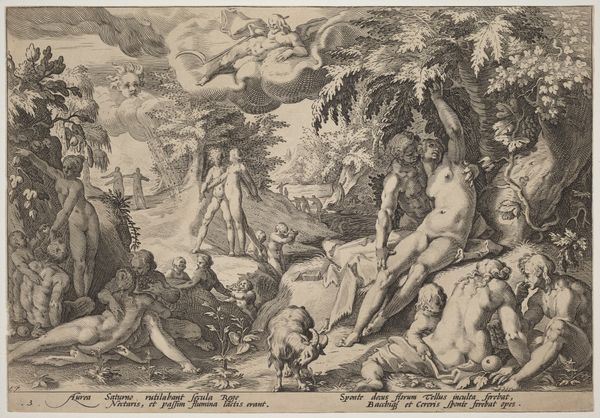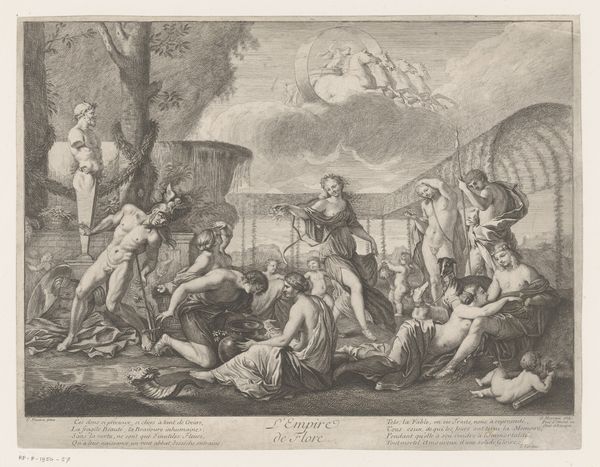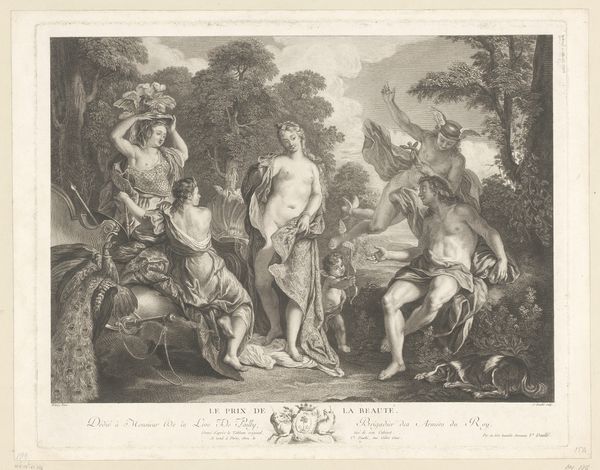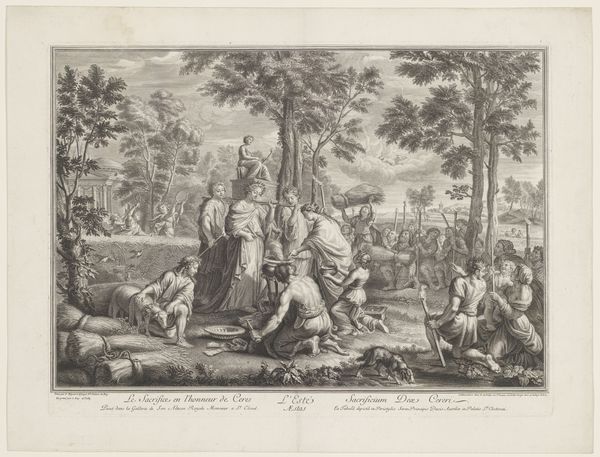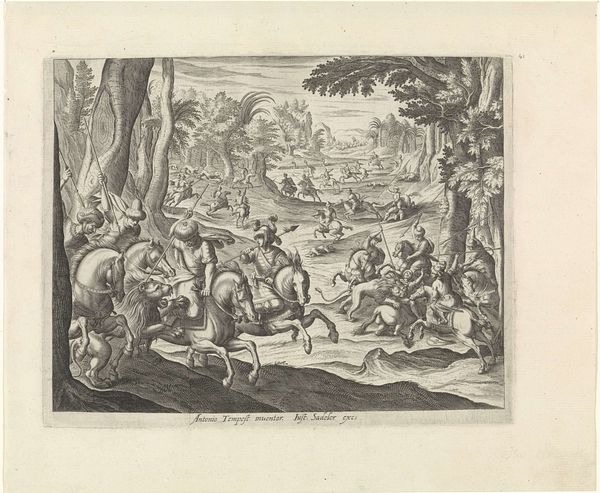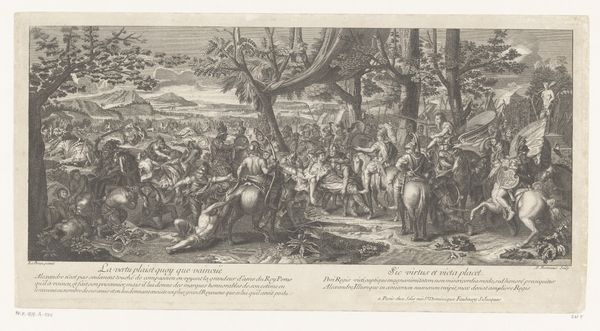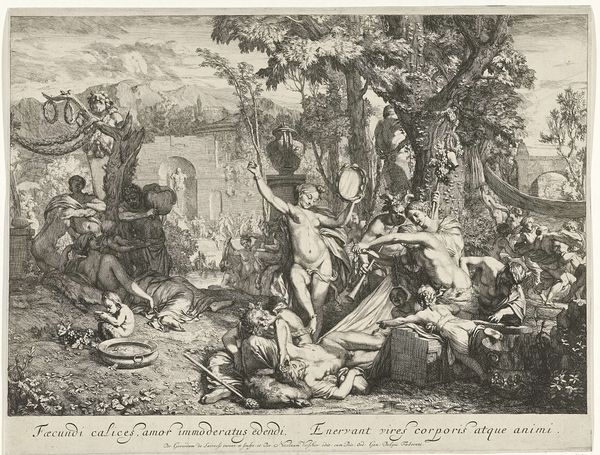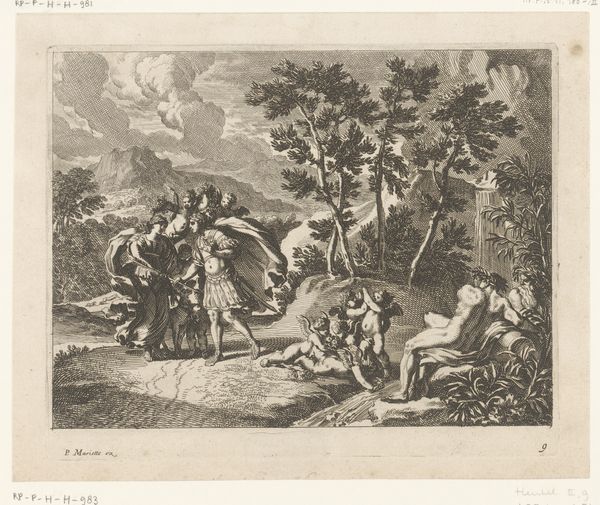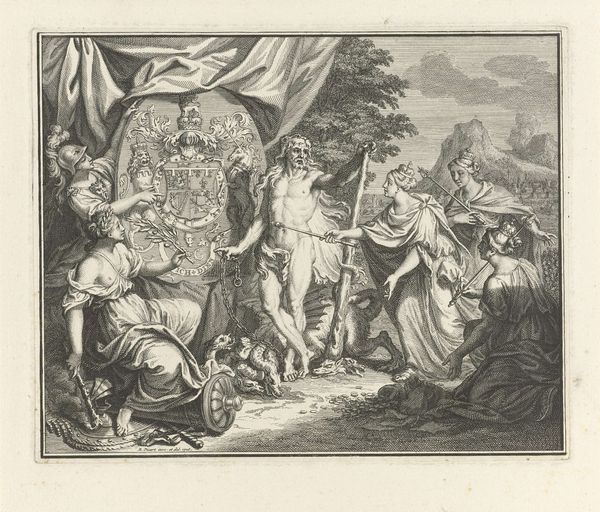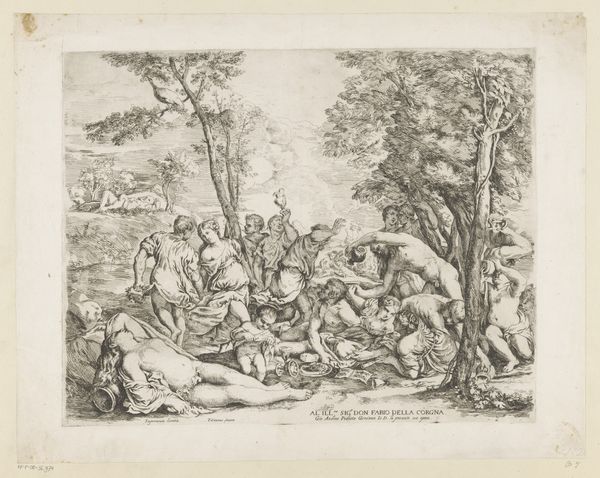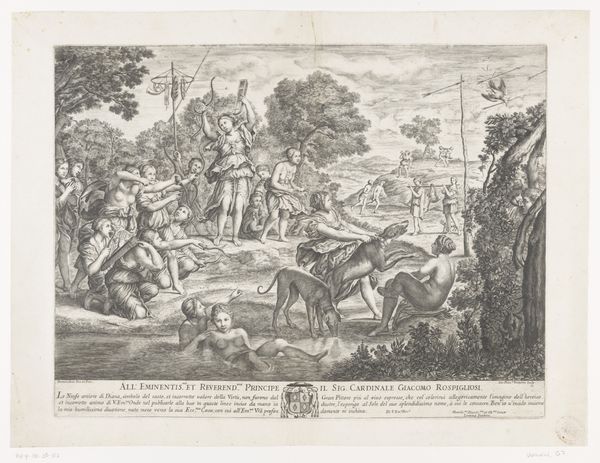
print, engraving
#
baroque
#
ink paper printed
# print
#
old engraving style
#
landscape
#
figuration
#
history-painting
#
engraving
Dimensions: height 448 mm, width 514 mm
Copyright: Rijks Museum: Open Domain
Curator: This is an engraving created between 1645 and 1683 by Guillaume Chasteau, titled "Rinaldo en Armida." It's currently held in the Rijksmuseum. Editor: It has a melancholic yet sensual feel. The light is intriguing given that it’s a print; it really guides the eye through the composition, drawing my attention to the contrast between light and dark. Curator: Note the paper itself – think about where it came from, its linen or hemp composition. This was a mass-produced image intended for consumption by a specific class, reproduced via skilled labor of engraving with a burin, impacting the art market. What were the conditions for these laborers? Were they working in a guild system, or more akin to sweatshops? Editor: Regardless, the line work itself creates an almost ethereal atmosphere. Look at the textural differences achieved purely through the density and direction of the lines – from the smooth skin of the figures to the rough bark of the trees. Semiotically, the classical figures populate this scene with multiple layers of meaning; Rinaldo represents the heroic warrior while Armida represents a powerful sorceress, which creates an appealing psychological binary to decode. Curator: Exactly, the engraving medium itself imposes limitations and yet allows for wide distribution. This also impacts our understanding; it could be acquired more affordably than painting. The story of Rinaldo and Armida, from Tasso's epic poem, circulated widely through printed imagery and theater productions, revealing how stories are reproduced and made available. Editor: Ultimately, I think this demonstrates that the careful application of artistic skill and formal knowledge can result in complex images rich in emotion and deeper significance. Curator: And reminds us of the systems of labor, and material production that create the physical art objects, influencing social understandings of the very subjects that they depict.
Comments
No comments
Be the first to comment and join the conversation on the ultimate creative platform.
